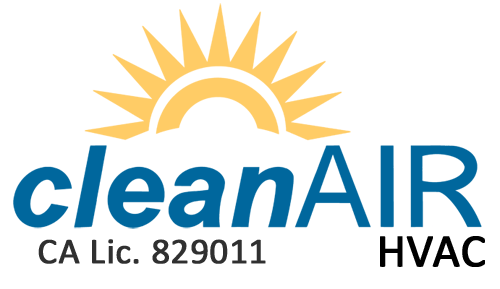
The global growth of COVID-19 has likely shifted your typical schedule upside down.
When things feel uncertain you can take peace in knowing your residence is your safe retreat. You’re possibly spending more time there today. Consequently your indoor air quality is now more important than ever.
Were you aware we can install indoor air quality products in your house that provide hospital-grade filtration? These solutions can eliminate bacteria from your air, as well as allergens, odors and volatile organic compounds (VOCs).
Up-to-date residences are tightly airtight, which is great for energy efficiency. But it also means your home’s air can be worse than the air outside. In actuality, the EPA says it can be two to five times worse than outdoors. This might be problematic since we spend about 90% of our lifetime in a building.
There are many elements that can contribute to poor indoor air quality, including cleaning products and air fresheners. These could lead to headaches and exasperate allergies and asthma.
There’s a combination of steps you can take to enhance your air quality. Some include better air filters, an air purification system or an ultraviolet (UV) germicidal light.
Not sure which solution is best for your residence? Our skilled techs can conduct an indoor air quality audit. Based upon the outcome, we can then suggest the best option for your household’s distinctive needs.
Continue reading to discover more about the air quality solutions we provide.
Air Filtration
When comparing air filters, you should consider the MERV rating, or Minimum Efficiency Reporting Value. This gauges how efficiently it filters air.
One of the most average and least expensive filters, flat fiberglass filters, rank between 1 and 4 on the MERV register. Pleated filters are a little bit better, ranking between 8 and 12.
We suggest buying at minimum MERV 13, for example the HC13 Media Air Cleaner, for the most ideal outcome. This filter gives fresher air while reducing energy use.
High Efficiency Particulate Air (HEPA) filters are regarded as the gold standard in air filtration, as they’re usually in use in hospitals. They’re effective at trapping 99.97–99.99% of indoor pollutants, including pollen, pet dander and smoke.
In advance of getting an enhanced filter, contact us at 925-233-6238. Our experts can help you select the right option for your system.
Air Purification
Lennox provides some of the best air purification units you can get. PureAir™ S and Healthy Climate™ PureAir Air Purification Systems provide hospital-grade filtration while handling all kinds of indoor air contaminants.
These powerful systems can eliminate:
- 99.9% of allergens, including pollen, dust and pet dander.
- 95% of bacteria-sized particles, like ones that lead to strep throat.
- 50% of VOCs and odors within 24 hours.
UV Germicidal Lights
A UV germicidal light is installed on the inside of your HVAC system. Its penetrating rays wipe out bacteria and mold within seconds.
If your family suffers from allergies or asthma, this equipment can provide relief. Especially if you live in a muggy part of the country where bacteria and mold grow quickly.
This light also offers an extra advantage for your comfort equipment. It can help it last for a greater period of time and operate more efficiently, because it keeps the internal parts clean.
Our air quality engineers suggest installing one of these lights with an improved filter, such as our Carbon Clean 16® Media Air Cleaner, for the greatest effect. This filter provides industry-leading MERV 16 filtration plus carbon-coated fibers to remove particles from your house’s air. It completes this without decreasing your heating and cooling system’s airflow.
Whole-Home Humidifiers
Acquiring correct humidity in your residence can help keep your loved ones in good health when it’s chilly. It can assist with sore throats, dry skin and chapped lips, among added cold weather bothers.
If you aren’t sure of what your home’s humidity range is, we’ll measure it when we complete your indoor air quality audit. While the range fluctuates based off of outdoor temperatures, HVAC professionals typically suggest keeping it between 40–60 percent.
You can achieve this optimum range by using a whole-home humidifier. This system generally functions with your furnace or air handler to deliver optimum humidity across your home. Some models, like the Healthy Climate® Whole-Home Power Humidifier, contain an incorporated fan to circulate humidity during the time your HVAC equipment isn’t on.
Rely on the Experts for Your Indoor Air Quality Requirements
At Clean Air HVAC, we’re passionate about making your home comfier. That’s why we offer Lennox air quality equipment, which are the most exhaustive solution on the market.
We’re also more than merely your heating and cooling company. We’re concerned about the well-being of you and your household. That’s why we’re taking extra precautions when we come to your residence.
To find out more about our air quality equipment, get in touch with us at 925-233-6238 or contact us online. Our skilled staff can also answer any apprehension you can have with a technician coming to your house at this time.
—
*Based on in-duct testing that shows Healthy Climate® filters reduce airflow restriction. Greater restriction of airflow creates a greater load on a unit’s fan motor, increasing energy consumption.


